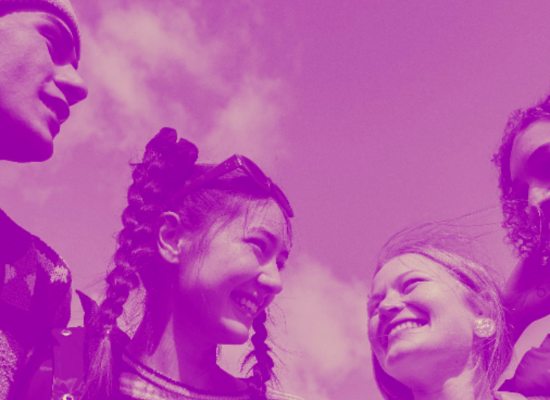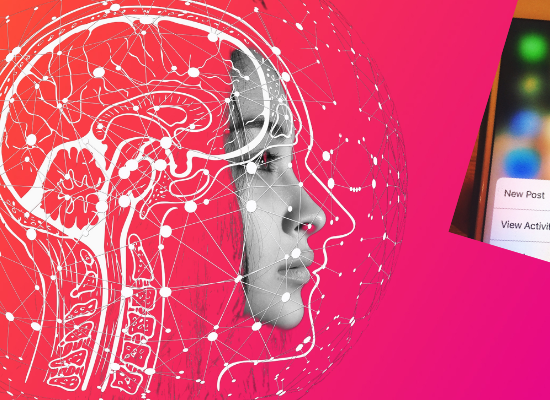
Stephanie Hepburn is a writer in New Orleans. She is the editor in chief of #CrisisTalk. You can reach her at .
Senior year for Madeleine Stults wasn’t how it should have been. She was among the 3 million-plus U.S. high school seniors in 2020. There was no prom. No senior trip. No commencement ceremony. Graduation shifted to Zoom.
“To not have closure and be cut off from the connections I’d made those four years complicated my mental health,” she said.
She’d already been feeling depressed and anxious. The loss of these milestones and pandemic lockdown orders only intensified her isolation.
“It got pretty bad, pretty quick.”
She wasn’t alone and that in itself gave Stults some solace. Knowing others were feeling like her motivated Stults to volunteer with NAMI Tallahassee. She started off fundraising for the local Bluebird Run and Walk for Brookie B—a race for suicide awareness and prevention—and later became a support group facilitator.
“The experience further made me realize mental health affects everyone, regardless of age or demographic.”
Because of the pandemic, all NAMI Tallahassee support groups were online, providing a virtual place not only for local youth and adults to meet but also for those around the nation. Stults shared that, at first, there were contending opinions on who the locally-based, tight-knit nonprofit should support.
In the end, they decided to allow people to participate from anywhere.
“We provided support to people who don’t have support in their own area,” said Stults. “It contributed to this feeling of, again, you’re not the only one—someone across the United States is going through something very similar to you. It was eye-opening.” She saw the highest surges in participation in the youth and LGBTQ support groups.
From there, Stults’ interest in psychology grew. Today, she’s an undergraduate research assistant at Florida State University’s March Lab, studying social psychology through the Dual Implicit Model. She’s examined pain-induced laughter and bias and behavior: exploring the outcomes of implicit police-danger attitudes. In 2023, she was awarded the American Psychological Association Summer Undergraduate Psychology Experience in Research Fellowship, funding her research on police biases and perceptions of police in young people.
“We didn’t necessarily mean to survey mostly young people but that’s what happens on a college campus,” she laughed.
She and her colleagues also surveyed an older audience of people ages 30-35. The survey of both groups revealed that participants often saw police as a threat to their physical safety, resulting in defensive, protective responses.
“We did a flight or freeze test,” she said, “and what we saw is fear responses that police can perceive as non-compliance or aggression.” She noted that when people experience fear, they have lowered cognitive functioning or might run away. “You want to get away as soon as possible.”
The pandemic sparked increased dialogue about mental health among the general population, legislators, schools and media, with HBO teaming up with NAMI on the “It’s OK to Not Feel OK” campaign to destigmatize mental health concerns and increase awareness. In one video, actor John Turturro said, “It’s okay if you’re panicking over an inability to control your life right now.”
Stults said she and many of her peers, who are among the pandemic generation now in college, grew up talking about mental health, especially mental health conditions that might be easier for the general population to understand.
“It’s been more integrated into our daily lives,” she said. “Adults understand the challenges of adolescence, the pressure of school and friendships, so it’s easier for them to empathize with and understand.”
Stigma has been more difficult to dislodge around mental health conditions perceived to be “less explainable, less palatable,” like bipolar disorder, schizophrenia and schizoaffective disorder. The result, she said, is that people better understand how to deescalate someone in a suicidal crisis than how to help someone in psychosis or having auditory hallucinations.
“What’s needed is more diversity and inclusion,” she said. “That’s true for youth as well.”
Her friend Trace Terrell, another youth advocate, has spoken on the tokenism of young people in mental health spaces. In October, he told #CrisisTalk that adults often believe youth “can’t meaningfully or substantively engage in advocacy.”
“Many of us are also not taken seriously by adults because they think the challenges we’re facing aren’t intense enough to give a lot of merit or credibility,” he said.
For some organizations, said Stults, having a young person on its advisory board is more about checking off a box than inclusion. But she said that’s changing.
“Organizations are beginning to recognize young people want to be part of these processes, not just privy to them,” she said. She’s on multiple advisory boards where she has a voice.
Still, it was her involvement in NAMI that altered Stults’ trajectory. “Not just my career trajectory,” she said, “but also my interests and passions.” She calls on organizations not only to involve young people to expand their knowledge but also to view it as an investment in the future of mental health.
“It’s instrumental in youth lives to be involved but also how these young people are going to shape the mental health industry, which is experiencing a workforce shortage—it’s a win, win,” she said.
What Stults sees more often now is not a lack of effort but a lack of understanding. One example took place amidst a discussion on trans mental health care; someone said it could be detrimental.
“It was difficult to be so much younger than the other people in that room, but I felt I had to respond.”
The person responded positively, and the dialogue, said Stults, shifted toward “a more inclusive and informed conversation.”
She believes that advocates, regardless of age or demographic, care about LGBTQ mental health care. “They just don’t have enough exposure knowledge.”
“The majority of 40, 50, 60-year-olds don’t have trans peers,” she said. “They don’t have exposure to those communities as much as youth.”
Stults noted that insufficient exposure makes it difficult to empathize.
“I will continue to talk about marginalized voices,” she said, “not to be a contrarian, but to expose people to experiences they might not know and the disparity that results.”









